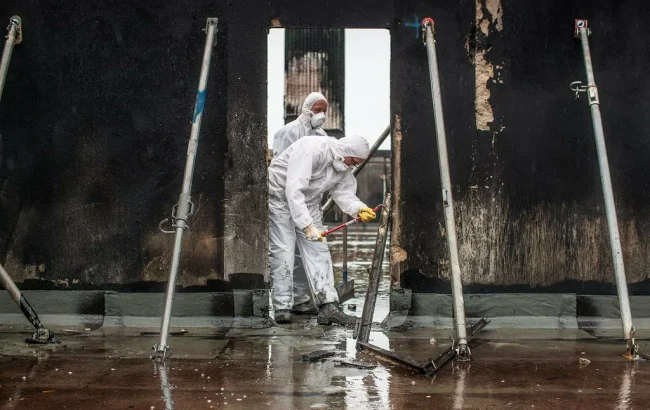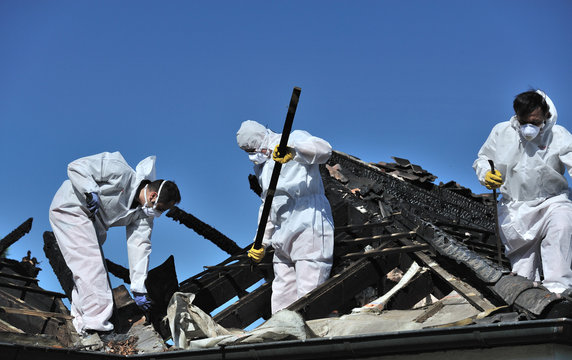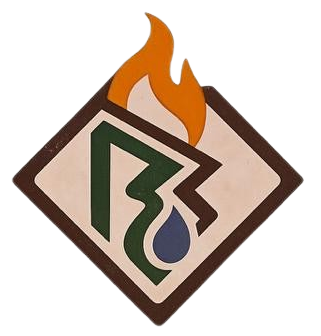What to Throw Away After Smoke Damage
When a fire breaks out, the flames aren’t always the most destructive part. Smoke contamination after a fire often causes more long-term damage than the blaze itself. Lingering soot, toxins, and odours can make your property unsafe, and knowing what to throw away after smoke damage in a house, apartment, or even wildfire-hit California properties becomes essential for health and safety.
This detailed guide explains what should be discarded immediately, what can be salvaged, the smoke damage health risks, and the steps you should take to restore your property.
Why Smoke Damage Is So Harmful
Smoke is made up of tiny soot particles combined with toxic chemicals released when plastics, paints, fabrics, or wood burn. These particles infiltrate every corner of your home—even places untouched by flames.
Health risks: Exposure can cause asthma flare-ups, coughing, respiratory issues, skin irritation, and eye discomfort.
Structural risks: Smoke penetrates walls, ceilings, fabrics, and furniture, making it difficult to remove.
Emotional impact: Deciding what to discard is often heartbreaking, especially with items of sentimental value.
That’s why professionals always say: when in doubt, throw it out.
What to Throw Away After Smoke Damage
Every situation is different, but whether you live in a California home affected by wildfire or a city apartment, there are categories of items that almost always need to be discarded after smoke exposure.
Food and Beverages
Food safety is one of the first concerns after smoke damage. Heat, soot, and firefighting chemicals can make food unsafe even if it appears sealed. Perishables like meat, produce, and dairy absorb smoke quickly. If your refrigerator lost power for more than two hours, it’s best to discard everything. Even canned goods and jars can be contaminated if they were near intense heat.
Medicines and Cosmetics
Medicines lose potency when exposed to high heat, and cosmetics absorb soot particles that can irritate skin or cause health reactions. Replacing these items is always the safest choice.
Clothing and Fabrics
Fabrics are particularly vulnerable to smoke. Clothing, bedding, carpets, and curtains absorb both soot and odours. While professional cleaning can sometimes help, many items remain unsafe. Are smoke-damaged clothes dangerous? Yes, if odours linger after cleaning, they can cause skin irritation or respiratory issues. Children’s clothing and baby blankets should always be discarded without hesitation.
Plastics and Children’s Items
Plastics exposed to high temperatures can release toxic substances. This includes storage containers, plastic kitchenware, and children’s toys. Baby gear such as strollers, car seats, and plush toys should also be replaced, as they absorb harmful smoke particles and pose risks for children.
Electronics and Appliances
Smoke infiltrates electronics, damaging circuits and increasing fire hazards. While larger appliances may sometimes be inspected and restored, many smaller electronics like toasters, kettles, or laptops are too risky to keep.
Paper and Documents
Paper absorbs smoke easily. Books, magazines, and files are often unsalvageable, but what can be saved from smoke damage includes vital documents or photographs restored through professional cleaning techniques.
What to Throw Away After Smoke Damage in an Apartment
Living in an apartment presents extra challenges. Smoke often spreads through shared ventilation systems, meaning your belongings may be contaminated even if the fire was not in your unit.
If you’re wondering what to throw away after smoke damage in apartment buildings, the answer is similar: food, medicines, clothing, plastics, toys, and electronics. The added concern is cross-contamination, so discard porous items more aggressively.
What to Throw Away After Smoke Damage in Bolingbrook, IL
California homeowners face a unique challenge with wildfire smoke. Unlike house fires, wildfires often spread smoke for miles, coating homes even if flames never reach them.
What to throw away after smoke damage Bolingbrook, IL style, often includes outdoor furniture, garden tools, and anything porous left outside. Indoor items like fabrics, food, and plastics may need disposal if windows or ventilation systems carry smoke inside.
Is It Safe to Use Items After Smoke Damage?
A common question homeowners ask is: “Is it safe to use dishes after a house fire?” The answer depends on the material. Non-porous items like glass, ceramics, and stainless steel can often be thoroughly cleaned and reused. However, plastic kitchenware, porous materials, or anything still covered in soot should always be discarded.
Appliances, cookware, and utensils exposed directly to smoke should be carefully evaluated. When safety is uncertain, replacement is the best option.
Is It Safe to Use Items After Smoke Damage?


One of the most common questions is: is it safe to use dishes after a house fire? The answer depends on the material.
Safe: Glass, ceramic, and metal dishes can often be cleaned thoroughly and reused.
Unsafe: Plastics or porous items that still smell of smoke should be discarded.
Appliances like kettles or toasters exposed to smoke should also be replaced for safety.
What Can Be Saved from Smoke Damage?
While many items must be discarded, things that can be salvaged after a fire include:
- Non-porous surfaces like metal, stone, or glass.
- Jewellery and valuables such as gold, silver, and gemstones.
- Important documents and photos, if treated by professional restorers.
So what can be saved from smoke damage depends on the material and how quickly restoration begins.
What to Do After Smoke Damage
Once the fire is out, knowing what to do after smoke damage is critical:
Protect yourself: Wear gloves, masks, and eye protection before entering.
Ventilate carefully: Open windows but keep HVAC systems off to prevent spreading soot.
Document everything: Photograph items before discarding them for insurance claims.
Call professionals: Experts know how to get rid of smoke damage completely.
File insurance claims quickly: Provide evidence to speed up compensation.
Smoke and Smog - What’s the Difference?
People often confuse smoke with smog, but both involve harmful airborne particles.
What to do in smog: Limit outdoor exposure, wear N95 masks, and run air purifiers indoors.
What to do after smoke exposure: Stay hydrated, get into a clean-air space, and consult a doctor if symptoms persist.
What steps should be taken to get rid of smog indoors: Seal windows, change HVAC filters, and use HEPA purifiers.
And for curiosity, how to make smoke thing or smoke bombs Islamabad style is often searched online, but these DIY projects can be dangerous and worsen indoor air quality. It’s safer to avoid them altogether.
Don’t Face Smoke Damage Alone
Dealing with smoke damage is stressful, but knowing what to throw away after smoke damage helps protect your family and your future. From food and medicines to plastics and electronics, discarding the right items is crucial. While things that can be salvaged after a fire exist, safety should always come before sentiment.
Professional guidance is often necessary for complete recovery. A fire and smoke restoration company can provide smoke remediation services, professional smoke damage cleanup, and residential and commercial restoration solutions.
If you’re facing smoke damage now, don’t wait. Contact trusted smoke damage restoration experts like Rock Bottom Restoration for immediate help. Their team knows how to get rid of smoke damage, restore what can be saved, and ensure your home is safe again.
Call today or request your free consultation online. Your health and safety are worth it.
FAQs on Smoke Damage
Food, medicines, clothing, plastics, toys, electronics, and most paper products should be discarded.
Yes, if they still smell smoky after cleaning. Persistent odours signal harmful residue.
Similar to other homes, but also consider outdoor furniture and porous surfaces affected by wildfire smoke.
Due to shared ventilation, discard porous items aggressively, especially clothing, bedding, food, and plastics.
Glass, metal, and ceramic may be salvageable with cleaning. Plastics should be replaced.
Non-porous materials like jewellery, metals, and some documents with professional restoration.
